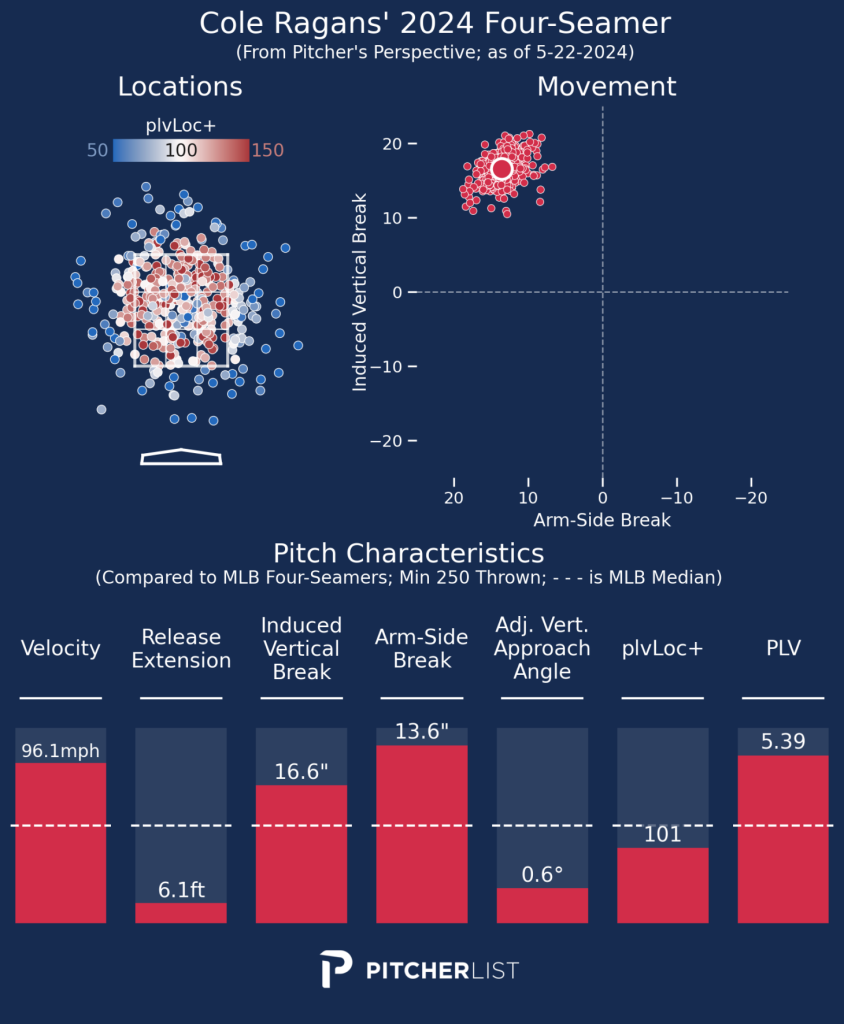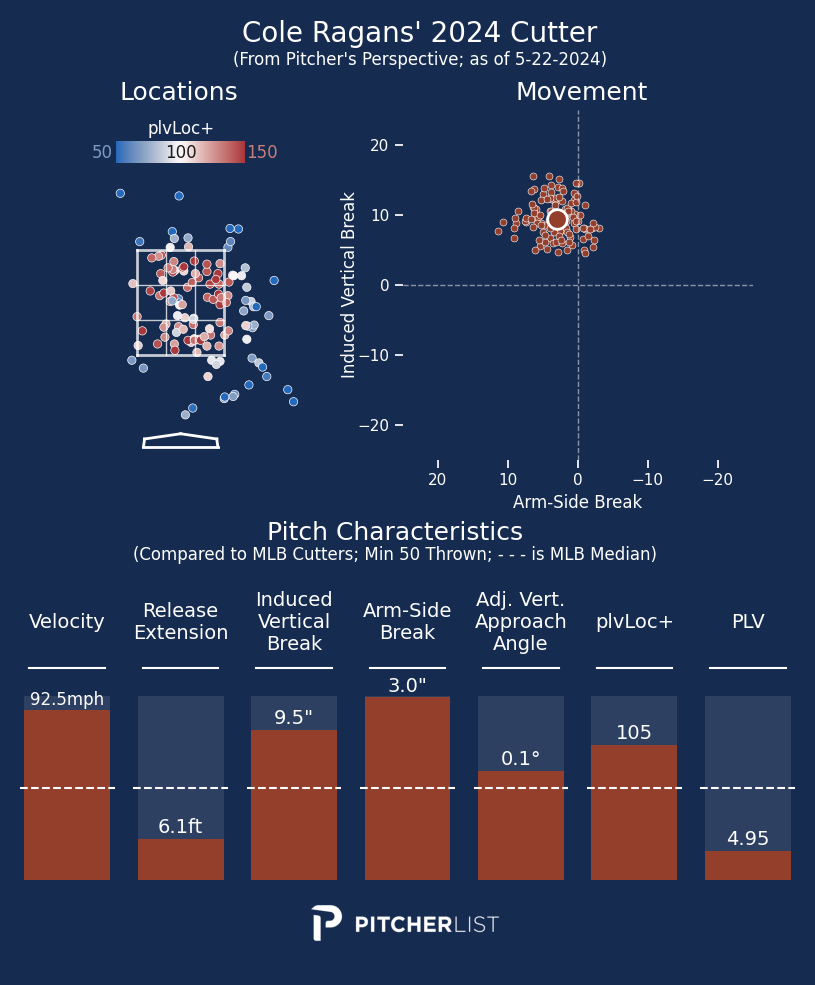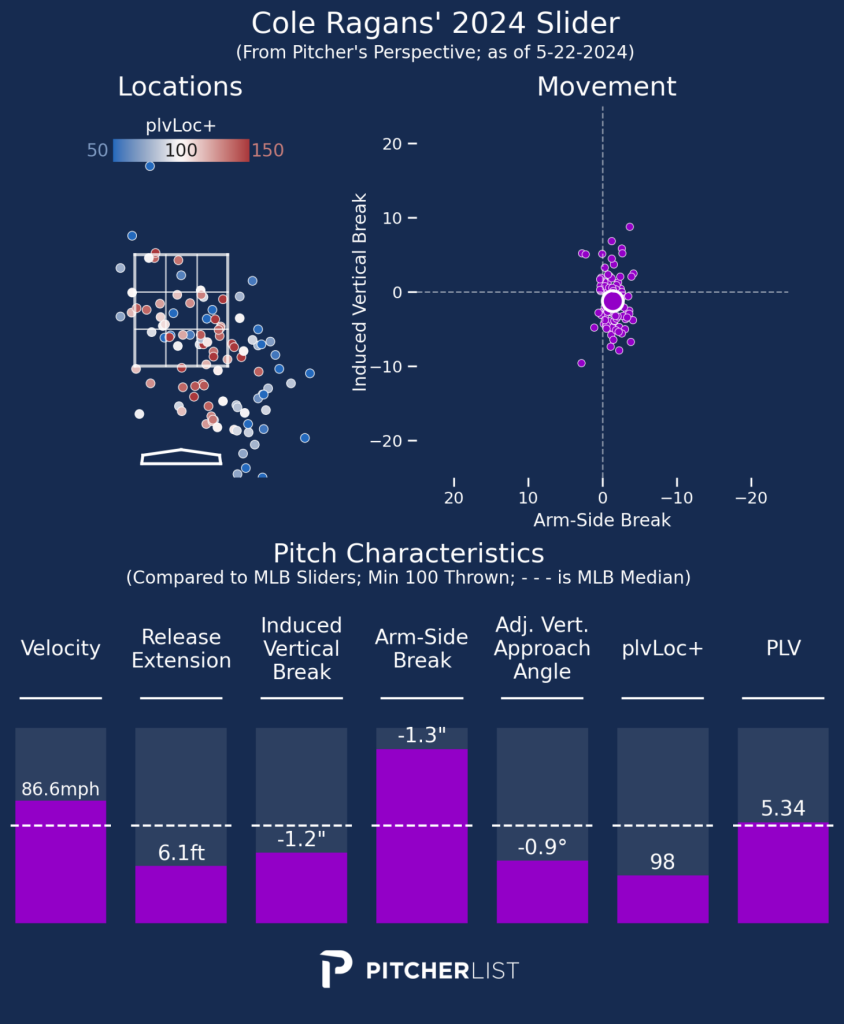Apologies for the lack of posts recently. Not only did the school year just finish, but I married over the Memorial Day weekend, which obviously took most of my attention and effort. Even though I am still riding the high of being a married man, I did want to write a post before going out of town this week on a “mini-Moon” to Minneapolis (we will be watching the Royals on Wednesday at Target Field).
The Royals have lost two games in a row after winning eight straight against the Athletics, Tigers, and Rays. Kansas City looked a bit flat offensively against the Twins’ Joe Ryan (which isn’t surprising since he looked good against them earlier in the year during Opening Weekend at Kauffman Stadium). That said, the Royals fought in the 9th inning, nearly coming back from five runs down.
After losing two in a row, the Royals will look to Cole Ragans to help snap their losing streak. Ragans (3.34) statistically has lagged behind other starters like Brady Singer (2.63) and Seth Lugo (1.74) in terms of ERA. However, according to fWAR, Ragans is still the Royals’ best pitcher, as evidenced by his 2.0 mark, according to Fangraphs.
Even though Ragans hasn’t been as dominant this season as he was with the Royals after being acquired at the Trade Deadline, he still has the highest ceiling of any starting pitcher in the Royals’ rotation, including Lugo and Singer.
Furthermore, a recent change in his secondary pitch mix could help Ragans tap into his “ace” potential and produce results that could thrust him back into the thick of the AL Cy Young race.
How Does Ragans’ Pitch Mix in 2024 Compare to Last Year?
According to Fangraphs, Ragans is producing a 2.37 FIP, a 3.04 xFIP, a 21.6% K-BB%, and an overall CSW% of 29.8%. All those numbers are not just an improvement for Ragans personally from a year ago, but his FIP, xFIP, and K-BB% also lead all Royals starters who have thrown 10 or more innings this season. His CSW ranks second, only 0.2% behind Singer (though Ragans’ SwStr% is 3.4% higher than Singer’s).
A big key to Ragans’ improvement is simply his improvement in the quality of his pitches based on his PLV metrics.
Here’s a look at his PLV arsenal stats from this season, leading up to Tuesday’s start, and how they compare to his numbers from a year ago.


Regarding PLV, Ragans has seen an improvement in quality with his four-seamer (0.42-point PLV improvement), changeup (37 points), and curveball (19 points).
He has seen an 11-point decline in his slider and a two-point decline in his cutter. His overall PLV of 5.22 is 27 points higher than a year ago. That shows Ragans’s improvement as a pitcher this year, even if the ERA isn’t as impressive as the 2.64 one he posted with the Royals in 2023.
Ragans’ four-seamer is an elite pitch in most categories, which is encouraging, considering he throws it 41% of the time.
According to PLV Leaderboards, his 2.43 PLA is the 6th-best four-seamer of MLB pitchers who have thrown 900 or more pitches this season. Furthermore, his 31.3% CSW with the four-seamer ranks in the 83rd percentile of the league, and his Strikes-Ideal Contact Rate (Str-ICR%) is 53.7%, which ranks in the 59th percentile of the league, according to Pitcher List.
Here are some more details about Ragans’ impressive primary pitch.

As Royals fans can see, his four-seamer possesses above-average velocity, induced vertical break, and arm-side break, in addition to premium PLV. The only concerning category where he ranks below average is PLVLoc+, which has a 101 mark.
However, it seems like Ragans’ has been addressing this issue by sacrificing a bit of velocity to gain more command with the pitch. That can be seen via this zone and fastball velocity trend chart 1=10&dStatArray=FA&ymin=&ymax=”>via Fangraphs:

Notice how the average four-seam velocity in his last three outings (the red dot) is below the zone rate trendline. That shows that Ragans throws more pitches in the strike zone despite the lower average fastball velocity.
For those worried about the decrease as a possible “arm” issue, the fact that he can still easily touch 97-98 MPH should help alleviate those concerns.
Additionally, Ragans has succeeded this season with his changeup, which he throws 25.6% of the time. His 33.1% CSW with the changeup ranks in the 92nd percentile, and his 56.2% Str-ICR% ranked in the 87th percentile, both better than his four-seamer.
Regarding PLV, his changeup still lags behind his four-seamer but still ranks above average in many different pitch quality categories.

The combo of supreme vertical and arm-side break makes the pitch effective, even if it doesn’t sport great PLVLoc+ or PLV marks.
Here’s an example of Ragans effectively using the changeup in a 2-2 count to get Detroit’s Spencer Torkelson out swinging.
Ragans has the 1-2 pitch in his four-seamer and changeup to continue being an above-average to solid pitcher for the Royals for the remainder of this season and beyond.
That said, for Ragans to be outstanding and a Cy Young candidate, how he utilizes his slider (especially in favor of the cutter) could be the difference.
Ragans Using the Cutter Less (And Slider More)
I have noticed a trend with Ragans: over time, he’s lessened his use of the cutter as he’s thrown more innings.
After throwing the cutter 22.9% of the time against the Blue Jays on April 30th, that cutter usage has plummeted.

Since April 30th, Ragans’ cutter has been used between 4.2% and 5.9% of the time. Conversely, his slider usage, which had a rate under 10 percent in four straight starts from April 9th to April 25th, has been utilized more than 10% of the time in four of his last five starts.
His Savant Pitch% trend also shows his cutter usage declining recently, with his slider (and four-seamer) usage rate rising since May 12th.

The slider is a recently added pitch to Ragans’ repertoire. He didn’t start using it until he came to the Royals organization after being acquired in the Aroldis Chapman trade. Thus, it makes sense why the slider usage is low at 10% and ineffective in CSW (19%) or Str-ICR% (40%), especially compared to his cutter (28.6% CSW; 45.2% Str-ICR%).
On an xwOBA end, the slider has been a better pitch than both the cutter and curve, based on Savant trends. Even though the slider has seen a sharp rise in xwOBA allowed, it still isn’t nearly as high as the xwOBA on his cutter this season, which can be seen below.

Furthermore, let’s examine how the cutter and slider compare this season in terms of PLV and other key pitch quality characteristics.


Ragans has showcased better vertical break, arm-side break, and PLVLoc+ with the cutter this year. And yet, on a PLV basis, the slider has been 39 points better.
Even though the cutter has solid characteristics, it doesn’t offer enough to be a massively effective third pitch behind his four-seamer and changeup. Furthermore, the cutter seems only effective against right-handed batters, while the slider can be used against both.
Of the 126 cutters Ragans has thrown, he hasn’t thrown a single cutter against a left-handed batter.
On the flip side, he has thrown the slider 47 times against right-handed hitters and 58 times against left-handed hitters, including this one against Brandon Nimmo of the Mets, who struck out on Ragans’ breaking offering.
The cutter is not a bad pitch, especially against right-handed hitters. That said, using it more sparingly (and consequently increasing the slider usage) has produced better results for Ragans lately.
Since decreasing the use of his cutter in his last four starts, Ragans has not only a 3.20 ERA and 0.83 WHIP but also an overall CSW of 32% and PLV of 5.15, according to Pitcher List game logs.

Ragans has faced three below-average offenses in the Tigers, Athletics, and Angels over that timespan. On the flip side, his best CSW (37.9%) and PLV (5.26) came against the Brewers on May 6th. Milwaukee ranks 6th in runs scored and 5th in OPS.
Thus, Ragans’ slightly modified pitch mix is producing results, and it will be interesting to see how that cutter and slider usage fare throughout the season.
It wouldn’t be surprising to see the slider emerge as his third or fourth-most used pitch and his cutter perhaps be his least-used pitch by the conclusion of the 2024 season.
As said before, the cutter isn’t a bad offering, just a slightly below-average one.
It’s clearly only a weapon against right-handed hitters, so Ragans should utilize it sparingly to maximize its effectiveness (as seen in this swinging strike with the cutter against Houston’s Jeremy Pena).
The key to Ragans’ 2024 and long-term success could hinge on his slider usage and effectiveness.
The slider is still far from polished, which makes sense since he’s only been using it for less than an entire season.
With more usage, it could be an effective and perhaps his best breaking-offering by the conclusion of the 2024 season.
Ragans could set himself up as a perennial All-Star and Cy Young contender for years if that’s the case.
Photo Credit: Ed Zurga/Getty Images

Congratulations! I can speak from experience, finding a partner who’s cool with incorporating baseball into your honeymoon (and other travels) is a mark in the win column of life.
LikeLiked by 1 person
Thank you so much! And I agree. I am definitely lucky to be married to someone who enjoys baseball, especially games in person and exploring new stadiums!
LikeLike
Congratulations on the nuptials.
Not all is bad with the cutter, if he can use it as a waste or set-up pitch, it might come in handy. Granted, that is assuming that the delivery of his fastball looks like the cutter’s. An extra pitch, always gives the pitcher an extra edge. As he progresses, introducing a sinker into his repertoire might give him an extra edge with several offerings in the near-same speed, but with different effects. That could push the hitter to commit later and miss… Remember that hitting is all about timing and pitching is about upsetting timing. Ragans could also toy with a curve, but there’s more risk with that as a hanging curve gets hammered, and it might impact his existing mechanics. Anything that only requires a change of grip could aid him.
LikeLiked by 1 person
Thank you so much! For sure. I think his cutter still needs to be utilized. Obviously it’s got some potential and history. I do think his slider should be used more, and think the higher slider usage could have a positive impact on his curve, as you have mentioned
LikeLike
Well, since he is not established as a top of rotation arm, Im trying to look at him as a generic dependable starter. A broad repertoire provides an advantage not only in the isolated at-bat, but also allows him to be effective further into games as he introduces more secondary pitches. In my memory, the best slider pitcher has been 1970′ s Cardinsl, Steve Csrlton. I don’t know that Ragsns is in the same league, that’s why adding a sinker could make both his 4 seam fastball and his circle change more effective due to similar delivery, arm slot, arm velocity… The whole idea is to keep the hitter off balance and in defense rather than on offense. If he develops a “Carltonesque” slider, we will struggle to afford him.
LikeLike
[…] O’Brien looks into how a minor adjustment could take Royals ace Cole Ragans to another level: “The key to Ragans’ 2024 and long-term success could hinge on his slider usage and […]
LikeLike